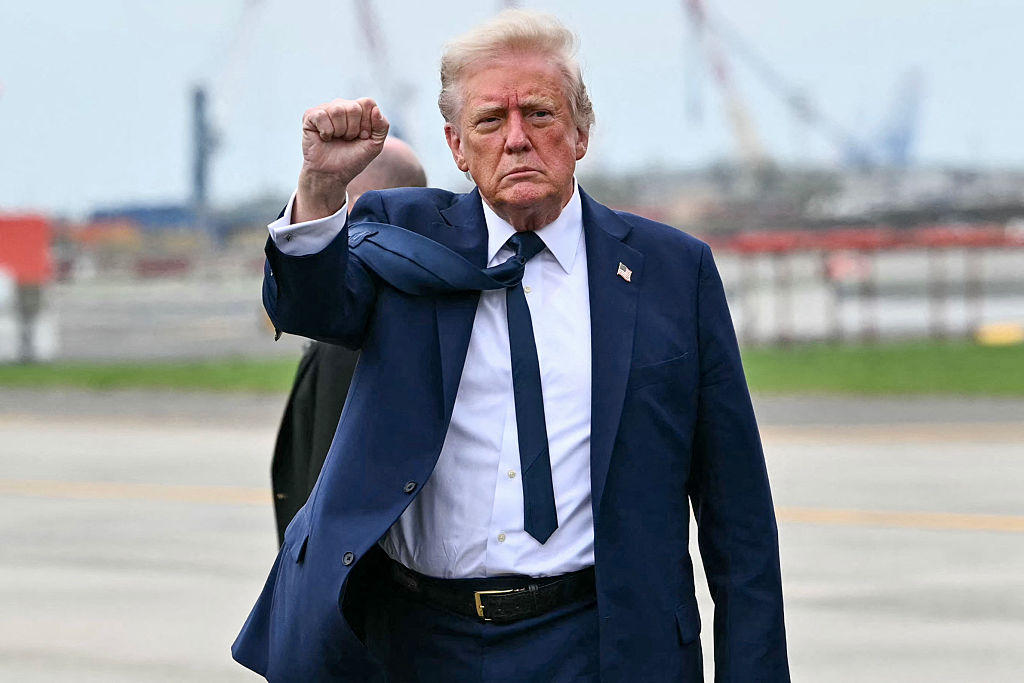This article is part of The D.C. Brief, TIME’s politics newsletter. Sign up here to get stories like this sent to your inbox.
It’s still April, but President Donald Trump is already letting Americans know that the October day widely acknowledged to be Columbus Day will in fact be Columbus Day, thank you very much.
[time-brightcove not-tgx=”true”]
The move, announced over the weekend as the newest side dish on the culture-war buffet, is merely the latest signal to Trump’s MAGA base that he won’t bend to political correctness or progressive ideology that favors Indigenous Peoples Day, which under President Joe Biden co-existed on that date. Christopher Columbus—who never set foot in the United States yet nonetheless is taught in schools as having “discovered” America—is right up there among “cancelled” American icons with Confederate leaders like Robert E. Lee. For Trump and his basic understanding of history, Columbus is as core to the United States’ DNA as apple pie and Betsy Ross, and the interloper Indigenous Peoples Day is a pernicious effort to hijack it like a cancer.
“The Democrats did everything possible to destroy Christopher Columbus, his reputation, and all of the Italians that love him so much,” the President posted Sunday on Truth Social, his alternative to the platform formerly known as Twitter. “They tore down his Statues, and put up nothing but ‘WOKE,’ or even worse, nothing at all! Well, you’ll be happy to know, Christopher is going to make a major comeback. I am hereby reinstating Columbus Day under the same rules, dates, and locations, as it has had for all of the many decades before!”
To be clear: Trump does not have the power to unilaterally declare a national holiday. Nor did anyone “destroy” the holiday; Biden issued proclamations acknowledging Columbus Day annually. At the same time, he recognized Indigenous Peoples Day, but Congress has not designated it into a federal holiday. Similar action would be needed to delist Columbus Day from the ranks of federal holidays. Congress has not done so. Members of Congress tried a couple of times to demote Columbus by changing the holiday’s name, but those efforts fell short. Several statues of Columbus have been removed in recent years, but it’s not as if Ohio is going to rename its capital anytime soon. Even in true-blue Manhattan, Columbus Circle still has its 76-foot tall namesake at its center, a monument developed in response to the violent lynchings of Italian-American immigrants.
October the 13th was always going to be Columbus Day, no matter what Trump said or did or tweeted. And, while implicitly saying Indigenous Peoples Day is no more, the President did not technically go that far. But his base sure heard what it wanted to.
The presidency has always been a largely performative task, undertaken with the expectation that the public-facing aspect of the job requires a show. The gig is a 24/7 act, but Trump takes it to a new level as he nurses grievances and fuels division for his own movement’s gain. His latest announcement is a naked appeal to voters who feel a new era of politics is excluding them by de-elevating a colonizing explorer who, per elementary-school understanding, in 1492 “sailed the ocean blue.” The reality is far more complex for a figure who opened the door for a European expansionism that led to the decimation and enslavement of native-born Americans. As many as 56 million native-born Americans died as result of Europeans’ arrival here between 1492 and 1600, but the elementary-school poem is as catchy as ever.
Political memory, similarly, has always been ripe for weaponization. There’s a dark link between history and nationalism, with the two feeding off each other to paint an ideal that can, at times, turn violent in defense of both an imagined past and systemic inequality. Just look at the rise of white Christian nationalism in the last half century that accompanied increasing civil rights—and the violence it has unleashed. It’s almost impossible to imagine the MAGA present in the absence of a nativist, nationalist antecedent.
But the irony is that Columbus never stood on what is today mainland North America, despite becoming a rallying point after Italian-American immigrants were lynched in the 1890s. Columbus was a stand-in for the nation’s hagiographic origin story, much like the Mayflower or its Western pioneers. As Stephen Sondheim so wisely observed, children will listen to the tales they are told, and those myths are tough to shake once they take hold. It’s why everyone is Irish on Saint Patrick’s Day, and next Monday will see lines out the doors of our local taquerias for Cinco de Mayo—two holidays that barely rank in their purported homelands.
All of which suggests that Trump is less interested in correcting history or justifying a holiday-weekend mattress sale than nudging his faithful to feel aggrieved—and then emboldened. With a wink and a bullhorn, Trump is teaching his base to never back down from their dug-in stances—even those based on invented histories they were taught in kindergarten.
Make sense of what matters in Washington. Sign up for the D.C. Brief newsletter.

